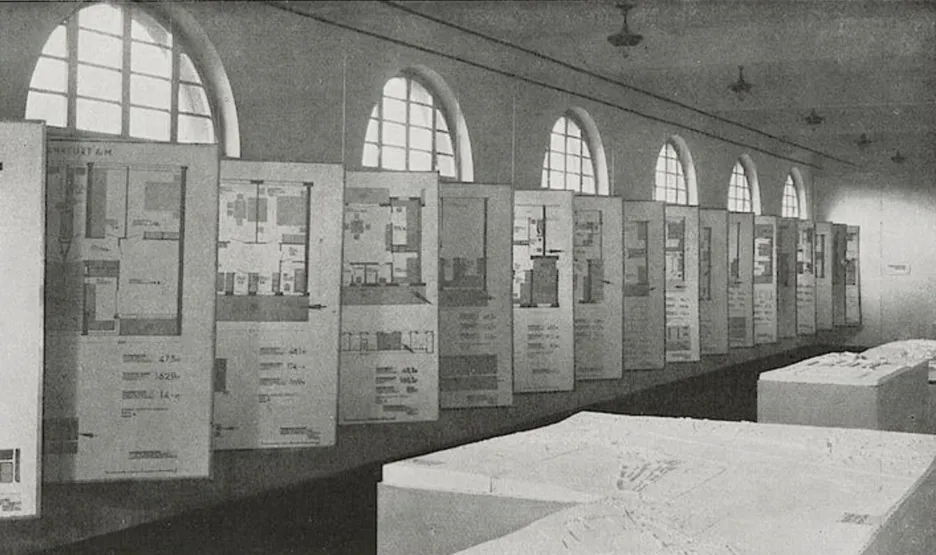CIAM's Exhibitions, 1928-1959. The Unknown Display of Modernism

The planning and hosting of exhibitions played a central role within the Congrès Internationaux d'Architecture Moderne (CIAM) from 1928 to 1959. However, in contrast to the eleven congresses, their publications and select leading figures, CIAM’s Exhibitions have so far been accorded only very little attention by research. This is surprising given that – as the latest archival findings of this thesis reveal – the planning and hosting of exhibitions indeed played a central role within CIAM’s operations and mechanisms and were key for the development and foundation of CIAM’s discourse.
Instead of underscoring the canonical histories of CIAM built upon the congresses and very few individuals, the thesis aims to introduce an alternative theoretical and methodological approach and corresponding historiography of CIAM. The hypothesis is that by looking at CIAM through the lens of its exhibitions with a parallel reading of the discourse that is already known, new fields of inquiry will be introduced resulting in a reframing of the canonical histories of CIAM.
The first field of inquiry concerns the idea of multiple authorship. Instead of ascribing CIAM’s influence to few protagonists – which until now was very often done in conventional historical studies of CIAM – the thesis aims to examine “other” actors behind CIAM’s Exhibitions that hitherto remained unknown. Who were the key figures in the so-called exhibition-committees? To whom can the authorship and curatorship of CIAM’s Exhibitions be assigned to? What other institutions and associations were involved in planning and hosting the exhibitions?
Secondly, taking into consideration that CIAM’s congresses depended strongly upon the visual material prepared for the exhibitions, a re-evaluation of the format of the congresses is required. Focusing on the exhibition material as a crucial element of the congresses will introduce a new understanding of the internal logic and mechanisms within which CIAM operated.
Thirdly, the thesis aims to explore CIAM’s Exhibitions as a means of exerting its influence and achieving its goals. The display practices, the representation of ideas and ideologies, as well as the accompanying programs must be explored to understand how CIAM tried to achieve its objectives through the public display and exchange of knowledge.
In order to contribute to the quest for a multi-authored, more complex view on the historiography of architectural modernism, the thesis argues for a reframing of the canonical histories of CIAM based on CIAM’s Exhibitions. The relevance of the thesis also lies in today’s scholarly focus on how architectural modernism is historicized. Here, the role and importance of architectural exhibitions more and more comes into focus as a relevant means of sharing and exchanging knowledge with the society at large. The thesis aims to contribute to a larger academic debate of the role of architectural exhibitions within the architectural historiography.
Clara Teresa Pollak M. A. (TUM) Technische Universität München
2020 - 2024
Second Supervisor: Prof. Dr. Barry Bergdoll, Columbia University New York
Mentor: Dr. Léa-Catherine Szacka, University of Manchester
Dissertation Fellowship from Konrad-Adenauer-Stiftung (2020-ongoing)